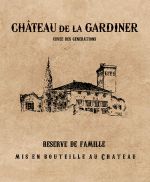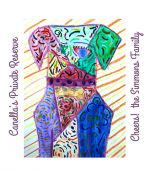
Here we are. It’s the dead of winter. Short dark days. Won’t see the neighbors until spring. Rainy, cold, and gray.
I’m thinking, in the quiet of the evening, that I want to have a glass of something red, smooth, flavorful and satisfying to my mood. And, oh yes, that goes with leftovers. Because I don’t feel like cooking. A GSM sounds like just the ticket. It’s such a comforting and food friendly wine!
GSM. Grenache, Syrah, Mourvèdre. The classic southern Rhône blend from the Côtes du Rhône region in France.
First, a little history and background information on the region. This area is located in the southeast of France and the Rhône river, from whence (whence?) it takes its name, runs right through the middle of it down to the Mediterranean Sea. The Greeks first brought viticulture to this area way back in the fourth century BC. But it was the Romans, who were trying to take over the world, who made the area a hot commodity. The Rhône River was the perfect highway for transporting soldiers, goods, and wine. They cultivated many of the existing vineyards and planted even more. Thank you, Romans.
Then we have that rebel Pope Clement V, who, in 1309, moved the seat of the Catholic Church (who was also trying to take over the world) from Rome to Avignon. He and the succeeding popes of the next 70 years started drinking and promoting the local wines. Indeed, the castle built there by Pope John XXII has become synonymous with the famous appellation Châteauneuf-du-Pape which translates to “the pope’s new digs.” Thank you, rebel popes.
Back to the grapes. There are 23 different grapes sanctioned for use in the southern Rhône, though not all are legal in all appellations. There are only 13 allowed in Châteauneuf-duPape. But I want to focus on the mainstays that make up the GSM’s. Let’s look at these three grapes which really define the style of the Côtes du Rhône wines.
First, there is Grenache. It is the lightest and fruitiest and generally the largest percentage of a GSM. It adds notes of candied fruit, raspberry, and cinnamon spice flavors.
Then there is Syrah. It adds the darker fruit flavors of blueberry, plum, and even black olive to the blend. It can also be very savory tasting. It adds flavor and boldness.
And finally there’s Mourvèdre. It’s a kind of rustic wine that actually originated in Spain where it is called Monastrel. It can add flavors of blueberry, plum, and blackberry. Also floral aromas and notes of violet and rose. And then there could be black pepper, smoke, and gravel and meat. What a wine! It adds structure and a more persistent finish.
It is my understanding that Grenache is prone to oxidizing easily. And that Syrah avoids oxygen and is prone to some stinky reduction. So they complement each other nicely and make great blending partners. Mourvèdre is like the big brother who gets them all together and tells the story of the whole day.
A GSM is generally medium bodied, fresh, spicy, and has some red fruit flavors. And you can drink them on the young side.
From the description of this blend, with such a variety of characteristics, doesn’t it sound like a wine that would go with many kinds of food? It does! Have it with beef, pork, game, duck, lamb, sausage and stuffed peppers! And soft cheese. And hard cheese. Just about anything!
Ok, then. Back to my quiet evening with turkey leftovers. And guess what? I have a GSM on hand. From Northwest Cellars no less. We call our blend Madrigal. The 2014 is just the loveliest of wines and is so right for tonight.
It gives me a sliver of hope along with the now lengthening days.
Happy New Year.
~ Peggy












0 Comments